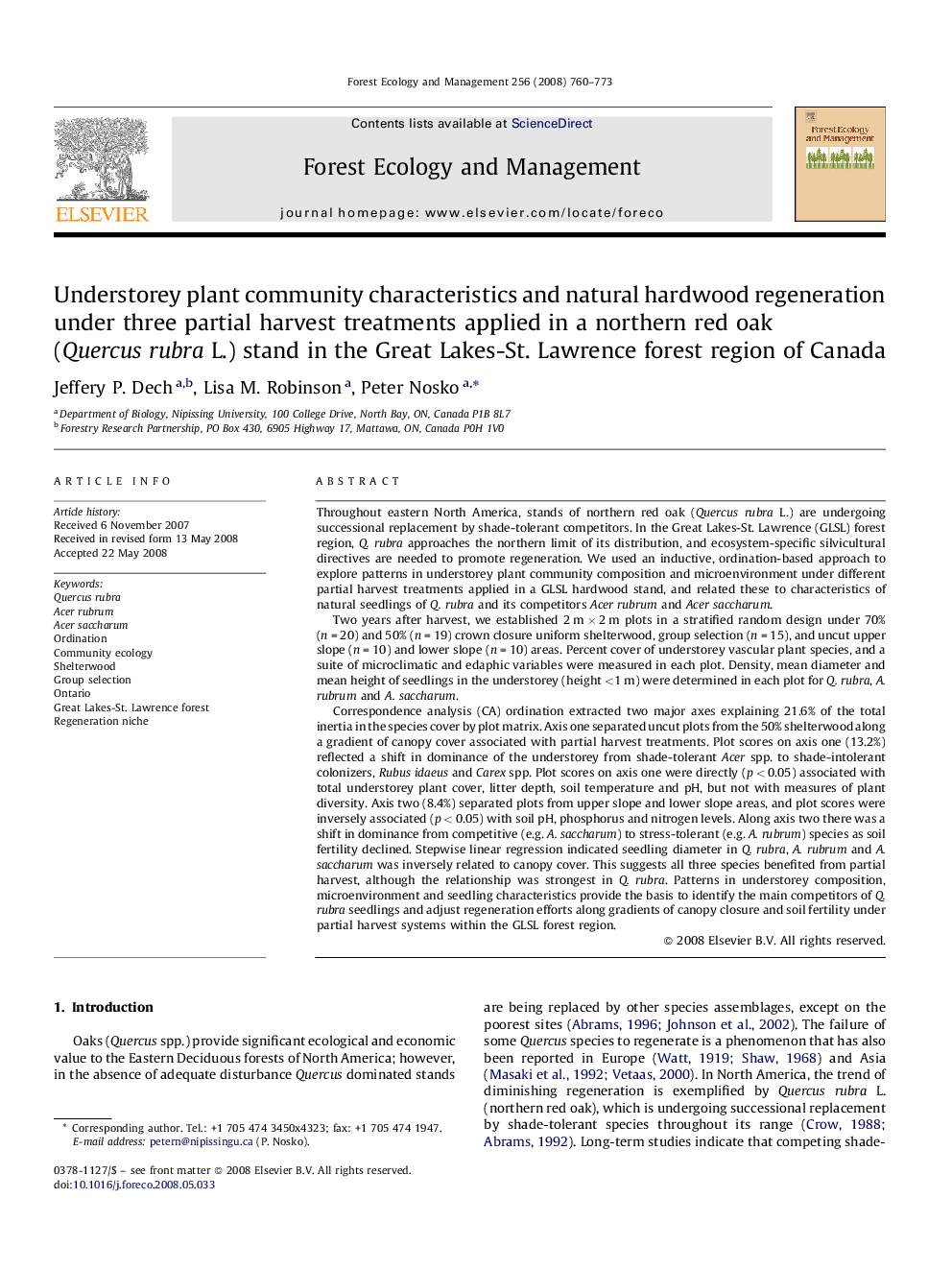| کد مقاله | کد نشریه | سال انتشار | مقاله انگلیسی | نسخه تمام متن |
|---|---|---|---|---|
| 89655 | 159349 | 2008 | 14 صفحه PDF | دانلود رایگان |

Throughout eastern North America, stands of northern red oak (Quercus rubra L.) are undergoing successional replacement by shade-tolerant competitors. In the Great Lakes-St. Lawrence (GLSL) forest region, Q. rubra approaches the northern limit of its distribution, and ecosystem-specific silvicultural directives are needed to promote regeneration. We used an inductive, ordination-based approach to explore patterns in understorey plant community composition and microenvironment under different partial harvest treatments applied in a GLSL hardwood stand, and related these to characteristics of natural seedlings of Q. rubra and its competitors Acer rubrum and Acer saccharum.Two years after harvest, we established 2 m × 2 m plots in a stratified random design under 70% (n = 20) and 50% (n = 19) crown closure uniform shelterwood, group selection (n = 15), and uncut upper slope (n = 10) and lower slope (n = 10) areas. Percent cover of understorey vascular plant species, and a suite of microclimatic and edaphic variables were measured in each plot. Density, mean diameter and mean height of seedlings in the understorey (height <1 m) were determined in each plot for Q. rubra, A. rubrum and A. saccharum.Correspondence analysis (CA) ordination extracted two major axes explaining 21.6% of the total inertia in the species cover by plot matrix. Axis one separated uncut plots from the 50% shelterwood along a gradient of canopy cover associated with partial harvest treatments. Plot scores on axis one (13.2%) reflected a shift in dominance of the understorey from shade-tolerant Acer spp. to shade-intolerant colonizers, Rubus idaeus and Carex spp. Plot scores on axis one were directly (p < 0.05) associated with total understorey plant cover, litter depth, soil temperature and pH, but not with measures of plant diversity. Axis two (8.4%) separated plots from upper slope and lower slope areas, and plot scores were inversely associated (p < 0.05) with soil pH, phosphorus and nitrogen levels. Along axis two there was a shift in dominance from competitive (e.g. A. saccharum) to stress-tolerant (e.g. A. rubrum) species as soil fertility declined. Stepwise linear regression indicated seedling diameter in Q. rubra, A. rubrum and A. saccharum was inversely related to canopy cover. This suggests all three species benefited from partial harvest, although the relationship was strongest in Q. rubra. Patterns in understorey composition, microenvironment and seedling characteristics provide the basis to identify the main competitors of Q. rubra seedlings and adjust regeneration efforts along gradients of canopy closure and soil fertility under partial harvest systems within the GLSL forest region.
Journal: Forest Ecology and Management - Volume 256, Issue 4, 10 August 2008, Pages 760–773